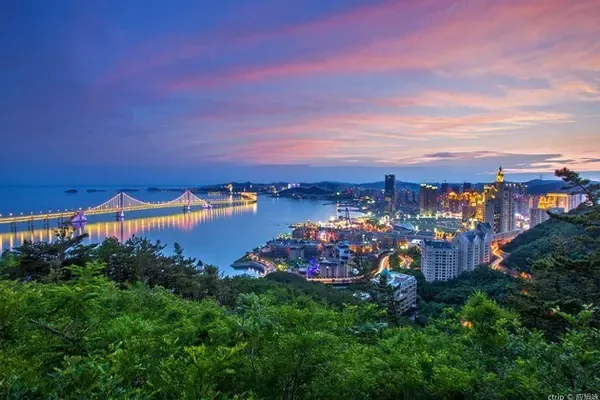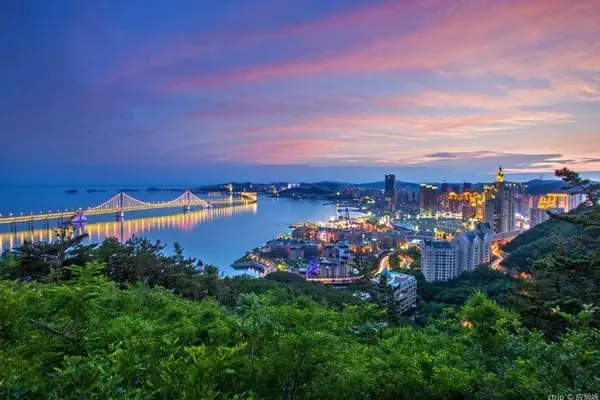

Singing folk songs, walk west
Brother, I'm going west
Little sister, it's hard to stay
holding my brother's hand
Send me to the gate...
At the junction of Youyu in Shanxi Province and Helinger in Inner Mongolia, there is a majestic pass called "Shahukou", which is the pass that the two provinces must pass through. said.

Just looking at the word "kill" in the name is very domineering. Killing a tiger is not "killing a tiger" but "killing a hu". Hu people who are good at riding and archery don't know farming and weaving, and they don't know how to make ironware, but this is a necessity of life, so they can only plunder with whips. The disturbance of the Hu people made the people of the Central Plains miserable. In order to resist the Hu people who appeared from nowhere at any time, the Great Wall was built. The Ming Dynasty also sent troops to resist the Hu people many times, so it was named "killing the tiger's mouth". The place names of this generation also have a lot of origins with the word "Hu", such as "Po Hu" and "Can Hu".
"Hu people" refer to various tribes and nationalities other than the Han nationality. Although "Hu" does not specifically refer to a certain ethnic group, it was a derogatory term in ancient times, and "Ku" is even more ugly, meaning a barbarian. Later, Altan Khan, the leader of Mongolia, and his wife San Niangzi made peace with the Ming Dynasty, and the Qin Dynasty was in power for the Manchus. After Kangxi put down the Galdan rebellion, the Mongolian-Han mutual market changed "Hu" to "Tiger".



"But let the flying generals of Dragon City stay, and don't teach Huma to go to the Yinshan Mountains." The poem expresses the tense and hostile situation at the border, and also points out the location of the Great Wall. Killing the Tiger Pass is located in the Manhan Mountains of the Yinshan Mountains, and the Great Wall to resist the Hu people winds and entangles on the back of the Yinshan Mountains. Now I drive from the Hudi Pass to the entrance.
Xikou Ancient Road Walking in from the small road next to Youyu Museum, you will see a stone at the entrance of the ancient road with "Xikou Ancient Road" written on it. The starting point of the ancient road is the Tongshun Bridge (built in the Qing Dynasty). This small single-hole bridge was the first bridge for people who walked through the west exit after leaving the customs. There are two water animals placed on the bridge, one looks like a buffalo and the other is unrecognizable.


Going to the West Gate has a history of more than 400 years since the middle of the Ming Dynasty. Going to the West Gate mainly refers to the Killing Tiger Pass. The Shahukou pass is a brick city gate opening that can only accommodate a carriage, and the two sides are connected by earth rammed city walls. The deep ruts on the stone road record the prosperity of that year. Helinger, Tumote and other places in Inner Mongolia have such place names as "one room", "three rooms", "five rooms" and so on. These are the places where people who walked from Xikou to Inner Mongolia could not get used to the place. In villages and towns, build one or three houses on the wasteland far away from a certain commune or village. One or several houses emerging from the wasteland have become landmark buildings. As the number of people going to the west entrance continues to grow, the one-room and three-room houses in those days formed a village. Then those who poured in built another house or three houses away from the front or back of one house, forming "the former house" and "the latter house".



Passing through the pass is the "Shahubao", a village on the edge of Shanxi to Inner Mongolia. Now the old castle has been built into a film and television city, basically built in imitation of ancient times. There is still a family living between the ancient castle and Shahukou. The house is relatively old, but agricultural machinery is parked next to it, and there is a stage next to the courtyard wall. The small shop next to the stage must have been the original property of this family. It must have been a wealthy family before.




During the epidemic, protest banners were also hung in the castle. In addition to the three of us, there were a few young people in the castle who played music and danced hip-hop, probably to show off in the circle of friends.


From the south gate of the ancient castle, there are a few farmer’s courtyards, which are no longer inhabited, but the owner still remembers to paste Spring Festival couplets on the occasion of the New Year to add vitality to the desolate courtyards, which also proves that these assets are well-known and well-owned.


Whose daughter-in-law goes in and out of such a trendy courtyard every day? Holding a small bench in his arms, spitting out melon seed skins in his mouth, after chatting at the entrance of the village, he pushed open the double happiness door, his brows fluttered with joy, and he entered the courtyard to feed the pigs and cook.

Huh~ Which family's daughter-in-law is this, with willow-leaf eyebrows and almond-shaped eyes, looking at that petite mask, there must be a big face behind it, what a talent! Did you come back to your mother's house?


In the spring season, farmyard manure has been transported to the fields. Here, every piece of land that can be cultivated is not abandoned, even a small piece.

Thirty-two Great Walls of the Sky
After coming out of the mouth to kill the tiger, he continued to go to the 32nd Great Wall. The Thirty-two Great Wall is located on Hualin Mountain, about ten kilometers southwest of Youwei Town. It is named after the Thirty-two Village next to it. beacon tower.


The Thirty-two Great Wall is not as majestic as the Great Wall wrapped in bricks, and the body of the rammed earth is full of vicissitudes. The Earth Great Wall presents a different landscape with its vicissitudes of life, witnessing the history of changes.

On the back of the beacon tower, the remaining snow that has not had time to melt is embedded in the withered grass, making the sky even more visible.


Gullies and ravines, dotted with remnant snow, meandering and entrenched, with vicissitudes of war. It’s not even an embellishment when my car is parked~




Bianguan Ancient Town---Youwei
The ancient city of Shanwu is the biggest unexpected gain this time. The accident is that I don’t know when Shanwu had such a city. Fortunately, I can spend my mother at home. Shanwu is Shanwu County, which was established in the south of Youyu County, Shanxi after Qin unified the six kingdoms. Improve Wu County to Weiyuan County, which will be abolished soon.

In the 25th year of Hongwu in the Ming Dynasty, Youyu set up border guards, and the acropolis was built on the ruins of Shanwugu City. Later, Dingbianwei moved away, and Datong Youwei and Yulinwei successively moved to be called Youyulinwei. In the third year of Emperor Yongzheng of the Qing Dynasty, Youyulinwei and Weiyuanwei were withdrawn and placed in Youyu County. There are four gates in the square of Youwei Town, and there is an urn city outside the four gates. If it wasn't for following a car and driving in, I really didn't know there was such a scene inside the city wall.
The north and south gates are refurbished gates and urns with bricks and tiles, and the east and west are still in their original appearance. We followed a car and entered from this north gate. Du Niang introduced that the north of the four gates is called Zhenshuo, and the north of the gate tower is called Yanjiang Suofeng; but what I photographed is that the north gate is "Zhenyuan" and the plaque is "Pingfan Heshuo". I don’t know if it’s a wrong link or I’ve misunderstood it. I hope someone who knows can help me out. Thank you!

This is the south gate opposite the north gate. Du Niang's south name is Yongning, and the wooden plaque on the tower is called Zisai Jintang in the south. Then I took the real thing and Du Niang's introduction was consistent.

This is the original appearance of the west gate. It can be seen that the gate of the Wengcheng City and the gate of the Weicheng City are not in a straight line. Ximen said - Dingwu, Dongmen - Heyang, and now they are given the name of Youyu Town.


The intersection of the east, west, south and north streets in the city is the most prosperous, and the largest supermarkets and shopping malls are concentrated at the four corners of the intersection.

There is a building on the north side of the crossroad that is now protected, and it looked like it was used for business before. The portrait of Chairman Mao is inlaid in the center, the inscription on the left should be "I wish Chairman Mao", and the inscription on the right can be clearly seen "Longevity without borders". On the left and right sides of the inscription, there are two sentences that do not rhyme "preparing for war and famine for the people" and "we must pay close attention to food".


north gate in rearview mirror

West Street is the Yulin Academy of Painting and Calligraphy, which should be the former site of Yulin Wei! Plaque titles of various colors are hung on both sides of the facade.

The villagers on the side of the road are drying corn.


The Post Office is the grandest department in the town, on the east side of Cross Street.


Continuing to the east, there are two longevity shops, such shops are rare. It's a pity that the shop is closed during the epidemic.



The Youyu Branch of Jinbei Industrial Bank, which was established during the Japanese and Puppet Puppet Period, was located in the south of Shizilu. How much people's fat and people's cream were scraped from here, and a large number of counterfeit coins were also issued.



As the sun set, we headed north, north, towards the hinterland of the Hu people.



![The appearance of Yingxian Wooden Pagoda [Photo: Mo Jun New Green]](https://www.anyonetrip.com/uploads/202302/02/614707843cf5d600.webp)